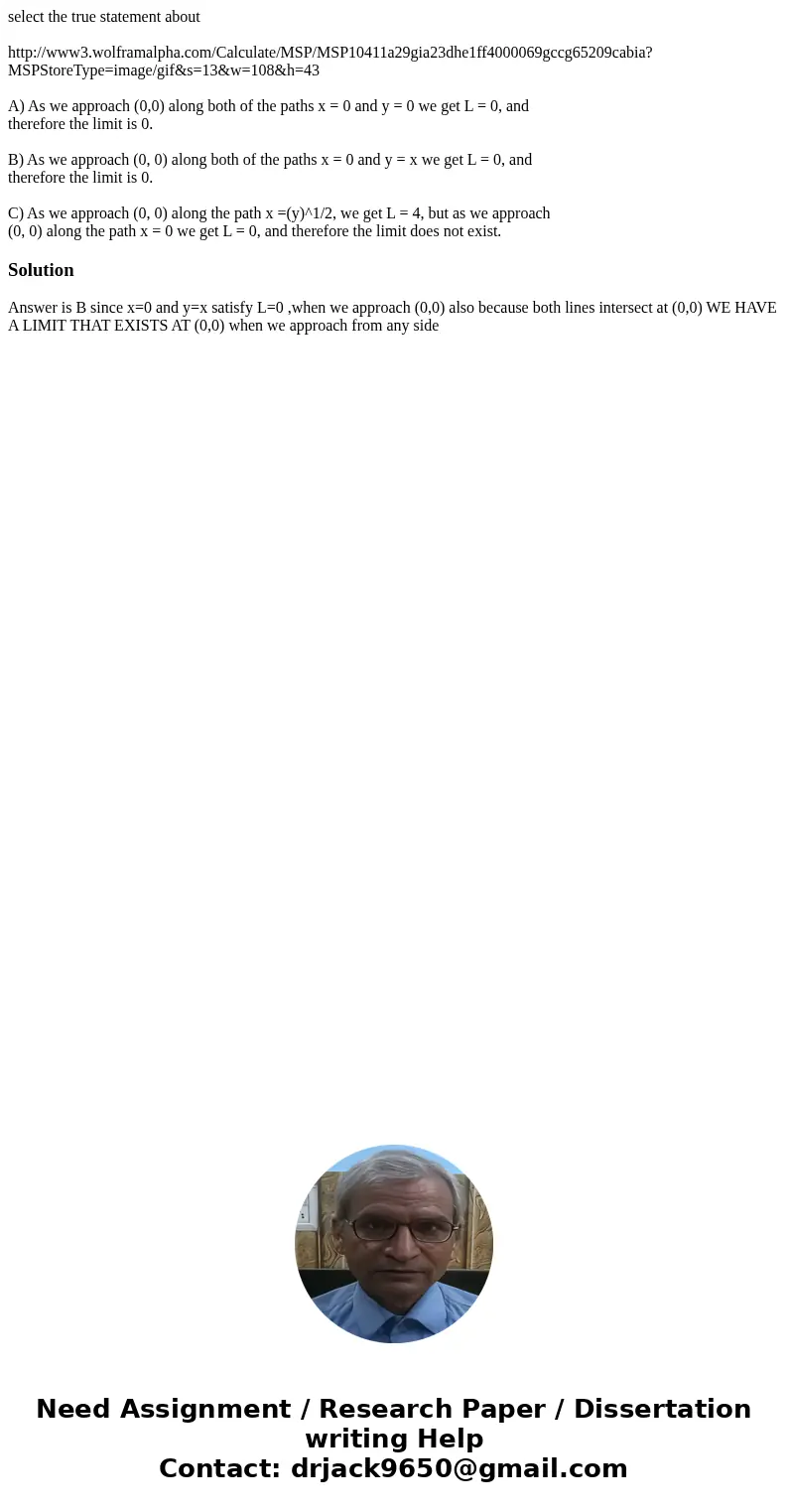select the true statement about httpwww3wolframalphacomCalcu
select the true statement about
http://www3.wolframalpha.com/Calculate/MSP/MSP10411a29gia23dhe1ff4000069gccg65209cabia?MSPStoreType=image/gif&s=13&w=108&h=43
A) As we approach (0,0) along both of the paths x = 0 and y = 0 we get L = 0, and
therefore the limit is 0.
B) As we approach (0, 0) along both of the paths x = 0 and y = x we get L = 0, and
therefore the limit is 0.
C) As we approach (0, 0) along the path x =(y)^1/2, we get L = 4, but as we approach
(0, 0) along the path x = 0 we get L = 0, and therefore the limit does not exist.
http://www3.wolframalpha.com/Calculate/MSP/MSP10411a29gia23dhe1ff4000069gccg65209cabia?MSPStoreType=image/gif&s=13&w=108&h=43
A) As we approach (0,0) along both of the paths x = 0 and y = 0 we get L = 0, and
therefore the limit is 0.
B) As we approach (0, 0) along both of the paths x = 0 and y = x we get L = 0, and
therefore the limit is 0.
C) As we approach (0, 0) along the path x =(y)^1/2, we get L = 4, but as we approach
(0, 0) along the path x = 0 we get L = 0, and therefore the limit does not exist.
Solution
Answer is B since x=0 and y=x satisfy L=0 ,when we approach (0,0) also because both lines intersect at (0,0) WE HAVE A LIMIT THAT EXISTS AT (0,0) when we approach from any side
 Homework Sourse
Homework Sourse